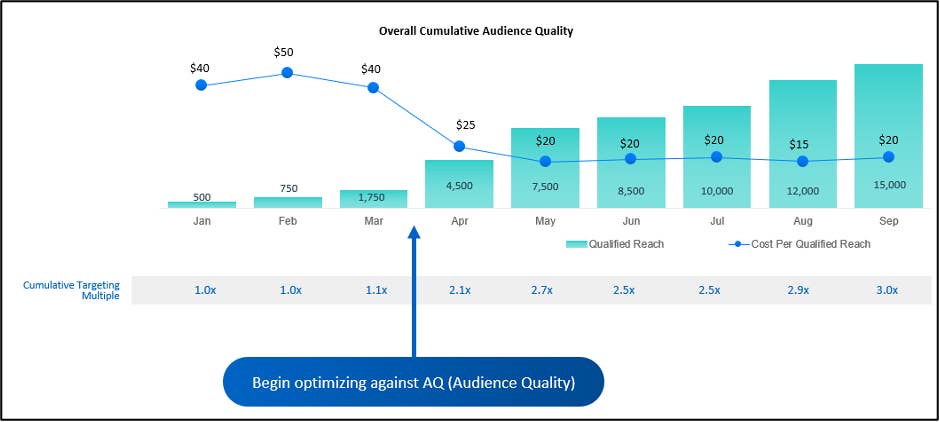By: Stephen O’Dea, VP, Global Health Strategy, dentsu health; Olympia Mantsios, VP, Global Data and Analytics, dentsu health; Kent Groves, PhD, Global Head of Health Strategy, dentsu health
Companies, teams, brands and unique therapeutic franchises (respiratory, cardiology, endocrinology, etc) need to embrace new technology, platforms, insights and approaches to modeling audience profiles. These considerations are critical if they hope to avoid the mistakes of the past, move beyond status quo, and take a leadership position as they look to accelerate the role of data driven insights on their market performance.
Unfortunately, all too often an individual or company takes a duplicative approach to solutioning and expects a different result. This error in judgement, referred to as strategic inertia, is best characterized by a management team or leader who fails to undertake purposeful strategic and competitive actions when substantial changes occur within their target audience or their operating environment. Failure to take appropriate action renders their current position and go to market strategy sub-optimal, ineffective and typically out of touch with the existing market narrative.
If we consider the fact that data is the capital that enables communications, the path to pursuit of the appropriate engagement strategy is a function of data and the associated insights provided.
Why Do We Need Data-Driven Insights?
The true power of data-driven insights lies in understanding causality, which is far more impactful than mere correlation. The evolution of analytics and machine learning models is essential, enabling us to justify (and optimize) nearly every dollar spent. By focusing on causality, we can pinpoint which touchpoints are most effective for physicians and patients, eliminating randomness, uncertainty and intuition from the decision-making process.
As we discuss in the final paper in this series, the ultimate performance metric is business impact. However, achieving this requires aligning with each brand’s stage in its maturity lifecycle. The role of strategy and analytics is to fine-tune broad media approaches, creating more intentional, targeted experiences for both physicians, patients and caregivers. To achieve this, we must acknowledge the analytics maturity journey, which is about crafting the right path for each brand. This journey involves moving from upper-funnel KPIs and insights to addressability, impact, and performance, while optimizing the customer journey at every stage.
Understanding Who and How Drive Impact
Identity resolution plays a key role in understanding the optimal customer journey, but it’s important to acknowledge that not all brands have reached that level of sophistication. There are still valuable ways to measure impact and gain insights without relying on identity resolution. These approaches go beyond upper-funnel KPIs, offering actionable insights that drive executional optimizations and deliver business impact at the operational level.
Digital attribution is one of these solutions and serves as a crucial bridge between channel measurement and the individual customer journey. It provides both ROI and strategic insights that enable optimizations across various aspects of campaign execution, such as creative, tactics, audience segments, search ad groups, TV genres, programs, and more. By offering a clear view of true impact and business outcomes, digital attribution empowers marketers to make informed decisions about where and how to allocate their budget beyond just channels. While it may not directly inform the customer journey, it provides actionable insights into media execution, which are critical to answer the questions every marketer is (should be) asking.
What to Do and Expect?
It is unlikely that any analytic/digital performance team would say that their approach would cost more, target less, or minimally optimize media or brand spend. That being said, it is important to establish reasonable expectations relative to other engagement models.
The first step is to optimize the overall media plan, both strategically and tactically, relative to the current media partners. This may include modernizing the media mix, shifting from external/managed service programmatic activations with duplicate audiences, setting up in-house/self-service activation with new audiences and broader engagement with community driven endemic partners. Most importantly, the mix should be optimized based on audience quality and attentive reach, rather than simply CTR (strategic inertia). Figure 1 provides a visual of how this evolves.

Innovating qualified audience reach through truly transformational data and media partnerships should provide a 20-30% short to mid-term reduction in costs and more importantly an increase in brand conversions. Additional relevant KPIs you should plan to see impacted, depending on the product life-cycle stage and therapeutic area are, cost per qualified lead (general reduction), significant increase in “qualified” patients reached and a large number of patients brought closer to the point of treatment.
Ultimately, the decision to start prescription medication is made collaboratively between a physician and their patient. However, connected media experiences can enhance these interactions and focus the discussion on essential treatment points. When both patients and physicians are familiar with a consistent brand narrative and content, they can engage in more meaningful conversations about treatment options. These critical moments, known as 'Points of Inflection,' represent the alignment between patient and physician journeys, facilitating more effective brand and therapeutic discussions.

